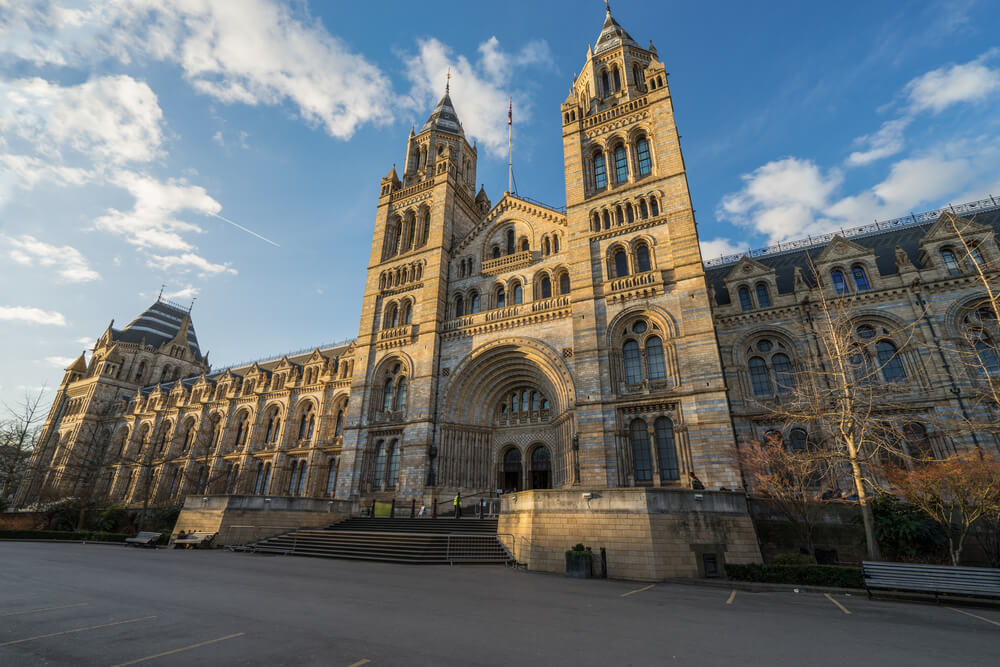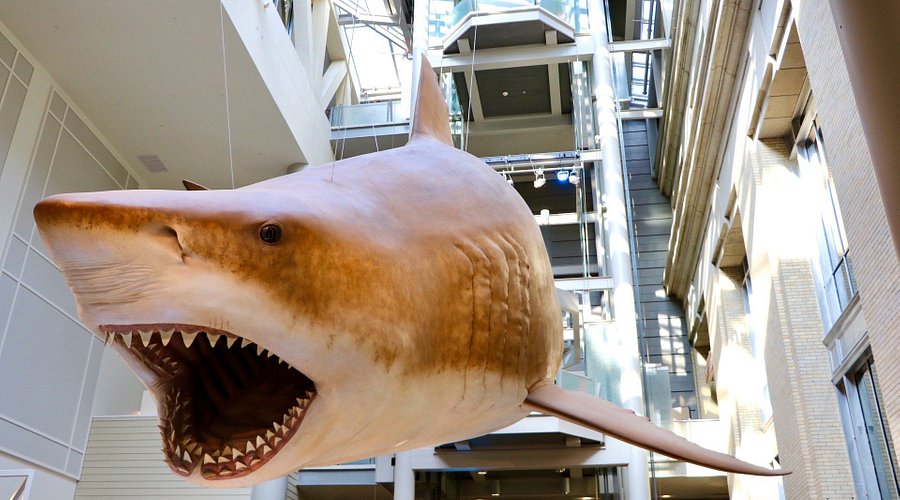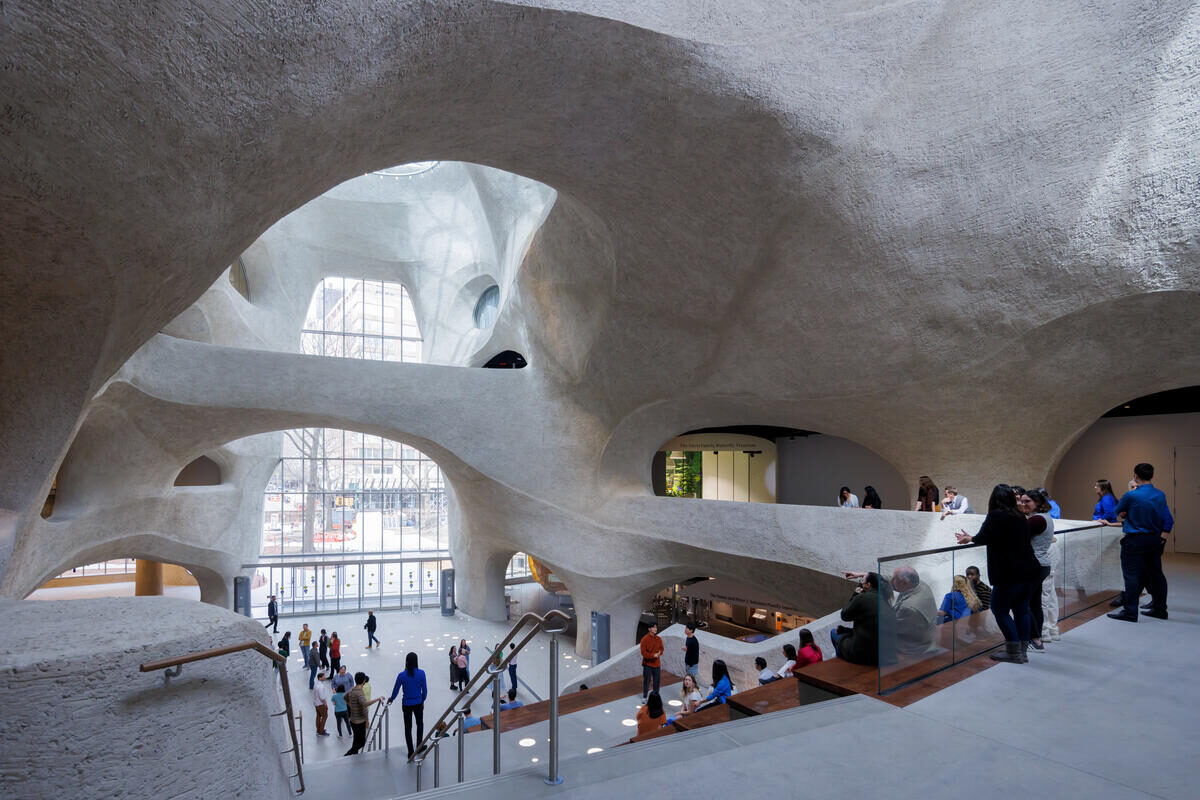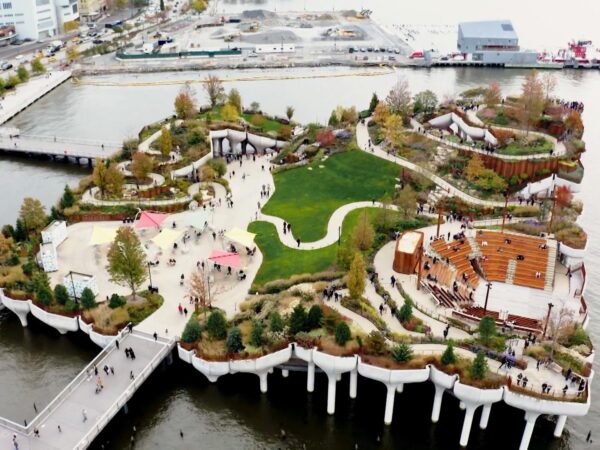Natural History Museum
The Natural History Museum is one of the top things to do in London. It offers an exciting journey through the wonders of the natural world. Explore stunning exhibits like the dinosaur skeletons, blue whale, and fascinating minerals. Learn about human evolution, earthquakes, and volcanoes in interactive galleries. The museum’s vast collections will captivate visitors of all ages. Whether you’re fascinated by dinosaurs, ancient creatures, or geological marvels, this museum is a must-see. Don’t miss it during your visit to London. It’s a perfect blend of education, entertainment, and awe-inspiring exhibits for everyone.
Description
The Natural History Museum is one of the most fascinating London attractions you can experience. It’s a place filled with wonders, from ancient fossils to stunning gemstones. Whether you’re a history buff, a nature enthusiast, or just curious, this museum is a great way to spend your day. If you’re wondering about the things to do in London, the museum should definitely be on your list. The building itself is a work of art, and the exhibits will leave you in awe. Each section of the museum offers something new and exciting to discover. When you visit London, don’t miss this iconic destination. It’s a fun, educational, and emotional journey that will stay with you long after you leave.
See the Dinosaur Gallery
The Dinosaur Gallery is the crown jewel of the Natural History Museum. It’s home to some of the most famous prehistoric creatures that ever walked the Earth. The gallery features life-sized replicas and fossils, including the awe-inspiring T. rex. You can almost hear the roar of these ancient giants as you stand under their skeletal frames. Visitors of all ages are fascinated by the massive bones, which provide a glimpse into a time long gone. This exhibit is one of the top London attractions, offering an emotional connection to Earth’s distant past.
The Dinosaur Gallery showcases the incredible diversity of life forms that once roamed the Earth. The detailed fossil exhibits and the informative displays help visitors understand how dinosaurs lived, hunted, and evolved. You’ll find fascinating facts about their behavior, diets, and environments. The giant skeletons make you feel small in comparison, but they also give you a sense of wonder. If you’ve ever dreamed of seeing a dinosaur, this is the place to be. This gallery will spark your imagination and teach you about the history of life on Earth.
- Marvel at the towering T. rex skeleton
- Learn about the history of dinosaurs and their extinction
- Explore fossils from various species, including sauropods and theropods
- Discover interactive exhibits for children and adults
Explore the Blue Whale Skeleton
One of the most breathtaking sights at the Natural History Museum is the blue whale skeleton. Suspended above you in Hintze Hall, the massive skeleton is an awe-inspiring sight. The blue whale is the largest animal to have ever existed, and standing beneath it will make you feel its grandeur. This London attraction gives you a sense of how small we are in the grand scheme of nature. The exhibit is incredibly emotional, highlighting the importance of preserving our planet’s ecosystems. The scale of the blue whale skeleton is truly mind-blowing.
As you gaze up at the whale, you’ll feel a deep appreciation for the wonders of the natural world. The exhibit not only showcases the whale’s physical size but also provides a look into its life in the ocean. The museum explains the significance of conservation efforts and how we can protect marine life for future generations. This is a must-see for anyone who wants to learn about the incredible diversity of life on Earth. The blue whale skeleton is a powerful reminder of the importance of protecting our oceans.
- Stand beneath the massive blue whale skeleton
- Learn about the blue whale’s size and lifestyle
- Discover the history of marine biology and ocean conservation
- Understand the role of marine life in our ecosystem
Visit the Earthquake Simulator
The Earthquake Simulator is an exciting and interactive experience that allows you to feel what it’s like during a seismic event. It’s one of the most thrilling things to do in London. Visitors at the Natural History Museum can experience the shaking of a building during an earthquake, simulating real-life conditions. The simulator is designed to show how earthquakes affect structures and the environment. It’s both educational and exhilarating, providing a firsthand understanding of seismic activity. The exhibit is a favorite among families, especially those with young children.
The Earthquake Simulator highlights the science behind earthquakes and the technology used to measure them. It gives visitors a chance to understand the effects of these natural disasters and how scientists are working to predict them. The exhibit is hands-on, so you can control the intensity of the shake and see how different buildings react to various levels of seismic force. This is a perfect activity for anyone looking for an interactive learning experience.
- Experience the sensation of an earthquake
- Learn how seismic activity is measured
- Understand how earthquakes impact buildings and structures
- Explore the history of earthquakes and their effects on the planet
Walk Through the Volcanoes and Earthquakes Exhibit
The Volcanoes and Earthquakes exhibit takes you on a thrilling journey through the Earth’s most powerful natural events. It’s one of the most exciting London attractions, featuring interactive displays and immersive experiences. You’ll learn about the science behind volcanic eruptions and how they shape the Earth’s surface. The exhibit shows how tectonic plates interact and what happens when they collide. It’s a fascinating and educational look at some of the planet’s most destructive forces. The hands-on displays make it a fun experience for everyone.
This exhibit at Natural History Museum provides insights into how volcanoes and earthquakes are connected. You’ll discover how volcanic eruptions cause seismic waves and create dramatic changes in the landscape. The exhibit also teaches about the safety measures and technologies used to predict and mitigate these natural disasters. Visitors will leave with a deeper understanding of the dynamic forces shaping our world.
- Learn about the science of volcanic eruptions and earthquakes
- Discover the relationship between tectonic plates and seismic activity
- Explore interactive exhibits that show volcanic activity in real-time
- Understand how scientists predict and study natural disasters
Explore the Human Evolution Gallery
The Human Evolution Gallery is a must-see for anyone interested in understanding our origins. This fascinating exhibit takes you through the stages of human development, from early hominids to modern humans. The displays include fossilized remains, reconstructions, and interactive models that show how our ancestors evolved over millions of years. The London attraction highlights the remarkable story of human survival, adaptation, and innovation. It’s an emotional journey through time that will leave you with a deeper appreciation for the history of humanity.
In this gallery, you’ll encounter some of the most important fossils in human history. The exhibits include famous specimens like “Lucy,” one of the oldest known hominids. The gallery explains the evolutionary milestones that led to modern humans, showcasing our ancestors’ physical and cultural advancements. It’s a powerful reminder of the journey that has brought us to where we are today. The Human Evolution Gallery is an essential stop for anyone visiting London.
- Explore fossils of early human ancestors
- Learn about the development of human behavior and culture
- Discover the milestones that led to modern human evolution
- View life-sized reconstructions of ancient human beings
Discover the Wildlife Garden
The Natural History Museum’s Wildlife Garden is a peaceful escape from the busy city. It’s a beautiful outdoor space where you can enjoy the sights and sounds of nature. The garden is home to a wide variety of plants, insects, and animals. It’s the perfect place to relax and connect with the natural world. The garden showcases how urban spaces can support wildlife and biodiversity. It’s an important space for conservation and education.
The Wildlife Garden is also an excellent place for families to explore together. Children will love discovering the various creatures that live in the garden, from birds to bugs. There are informative signs throughout the garden, teaching visitors about the different species and their role in the ecosystem. The garden is a quiet sanctuary in the heart of London, offering a chance to reconnect with nature.
- Enjoy the beauty of nature in the Wildlife Garden
- Discover a variety of plants, insects, and animals
- Learn about urban wildlife conservation
- Relax and unwind in the peaceful garden space
Investigate the Minerals Gallery
The Minerals Gallery at the Natural History Museum is a dazzling display of the Earth’s most stunning natural resources. It showcases a vast collection of minerals, gemstones, and crystals from around the world. The vibrant colors and intricate formations of the minerals are truly mesmerizing. This is one of the most visually striking exhibits at the museum, with pieces that will leave you in awe. It’s an excellent way to learn about the Earth’s geological processes.
The gallery also explains how minerals are formed, the different types of rocks, and their importance to human life. You’ll learn how minerals are used in everything from electronics to jewelry. The exhibit helps you understand the role that geology plays in shaping the planet and supporting human progress. It’s a fascinating and educational experience for anyone interested in the natural world.
- Admire beautiful gemstones and minerals from around the world
- Learn how minerals are formed and used in everyday life
- Discover the geological processes that shape the Earth
- Explore the role of minerals in technology and industry
Tips for Visiting
- Plan your visit early to avoid large crowds
- Check the museum’s website for special exhibits and events
- Allow 2-3 hours to explore the museum thoroughly
- Bring a camera to capture memorable moments
- Take advantage of free entry to the museum’s permanent exhibits
Conclusion
The Natural History Museum is one of the top things to do in London. It’s an emotional and educational journey through the wonders of the natural world. Whether you’re exploring ancient dinosaur skeletons or learning about human evolution, there’s something for everyone. The museum is an integral part of London attractions, offering an experience that is both fun and informative. Don’t miss the chance to visit London and see this iconic museum for yourself. You’ll leave with a greater appreciation for the planet and its history.














Reviews
There are no reviews yet.